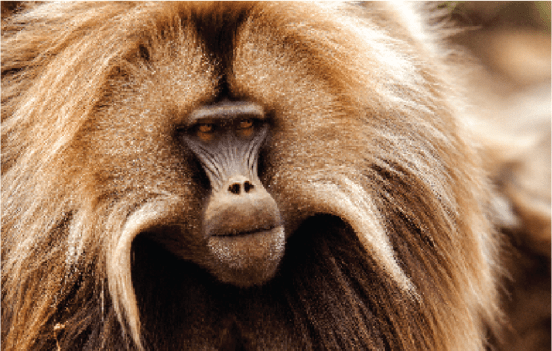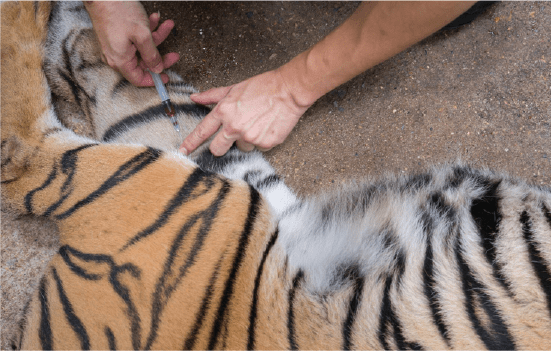Applications
Endangered Species Vaccines

Limited budget for conservationists imply that few studies towards the development of vaccines for endangered wild species. There is, however, a pool of orphan vaccines that are proven to be safe and effective in nonhuman primates but failed to be licensed for human use. Researchers from Integrated BioTherapeutics, University of Louisiana, US Army, and University of Cambridge demonstrated the use of virus-like particle (VLP) is successful in eliciting antibody response against Ebola virus, which killed one-third of the world gorilla population. The scientists have tested the experimental vaccine in captive chimpanzees. The research sets precedent on tapping the pool of orphan vaccines that have already been considerably developed and proven safe and effective in nonhuman primate populations.

Other viruses that infect domestic dogs are also affecting wildlife including tigers and lions. Canine distemper virus has caused the decline of Amur tiger population from 38 to 9 individuals from 2007-2012. An international meeting was held in 2015 for vaccines for conservation at Wildlife Conservation Society. In the meeting, strategies were laid out for controlling the effect of canine distemper virus in wildlife through vaccination. It was pointed out to facilitate the off-label use of already existing vaccines for dogs in wild carnivores. The safety and efficacy shall be tested during radio-collaring exercises. Better vaccine technologies including oral vaccination against distemper were also pressed by experts in the meeting.
References:
- Ben-Nun, I. F., Montague, S. C., Houck, M. L., Tran, H. T., Garitaonandia, I., Leonardo, T. R., … Loring, J. F. (2011). Induced pluripotent stem cells from highly endangered species. Nature Methods, (10), 829. doi:10.1038/nmeth.1706
- Boston University (2010). How Our Health Depends On Biodiversity. Last accessed 12 August 2019 from https://www.bu.edu/sph/files/2012/12/Chivian_and_Bernstein_2010_How_our_Health_Depends_on_Biodiversity.pdf
- International Union for Conservation of Nature (2000). IUCN Red List Categories and Criteria. Last accessed 12 August 2019 from https://portals.iucn.org/library/sites/library/files/documents/RL-2001-001-2nd.pdf
- Warfield, K.L.; Goetzmann, J.E.; Biggins, J.E.; Kasda, M.B.; Unfer, R.C.; Vu, H.; Aman, M.J.; Olinger, G.G.; Walsh, P.D. (2014). In: PROCEEDINGS- NATIONAL ACADEMY OF SCIENCES USA. 111(24):8873-8876
- Wildlife Conservation Society. (2015, February 12). Wildlife at risk around the globe: Scientists say vaccinating endangered carnivores of increasing importance. ScienceDaily. Retrieved August 26, 2019 from www.sciencedaily.com/releases/2015/02/150212153953.htm
- World Wildlife Fund (2019). Protecting Wildlife for a Healthy Planet. Last accessed 12 August 2019 from https://www.worldwildlife.org/species





